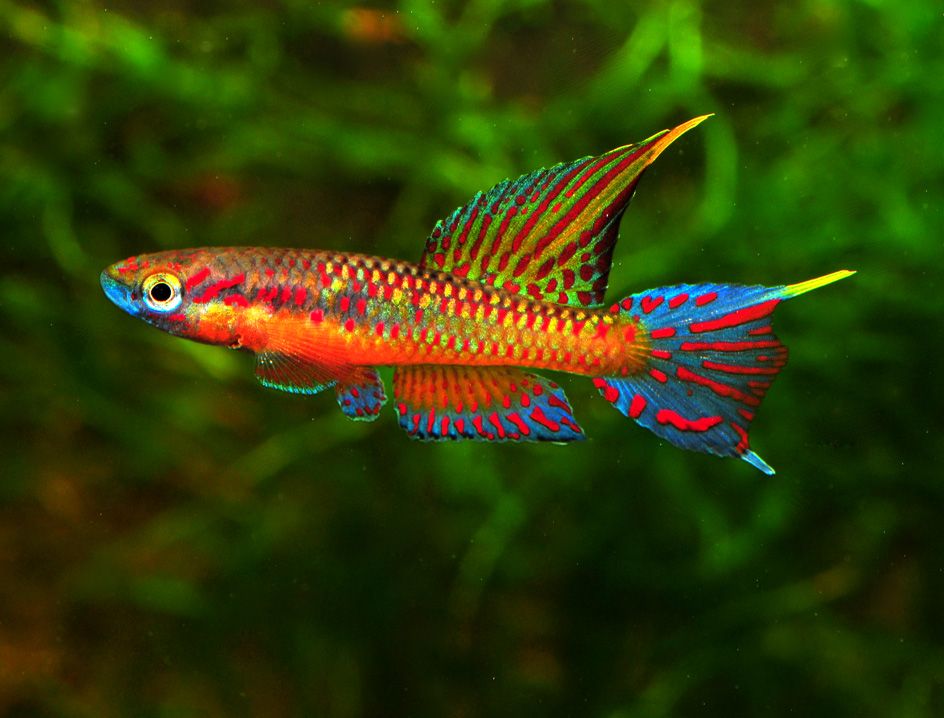
Keeping killifish: basic care and breeding
Killfish are a diverse group of freshwater fish known for their bright colors, unique patterns and interesting behavior. Keeping killifish in your aquarium can be a rewarding experience, but it requires special care and attention to ensure their health and well-being. In this guide, we'll cover the basic principles of caring for and raising killifish in your aquarium.
1. Understanding Killifish:
Before diving into the details of care and breeding, it is important to understand the basics of killifish:
-
Species: Killifish come in different species, some of which are annual (live in temporary bodies of water) and others are non-annual (live in permanent bodies of water). Popular killifish species for aquariums include Aphyosemion, Nothobranchius and Fundulopanchax.
-
Behavior: Killifish are generally peaceful fish that can be kept in public areas.
-
Color: Killifish are known for their vibrant colors and intricate patterns, making them valuable to hobbyists and collectors.
{thirty}
2. Tips for caring for killifish:
To ensure the health and well-being of the killifish in your aquarium, review the following care tips:
-
Aquarium Setup: Provide a well-stocked aquarium with plenty of swimming and hiding places for your killifish. Depending on the species, killifish may prefer areas with dense vegetation or open areas for swimming. Research the specific requirements of your chosen species and set up your aquarium accordingly.
-
Water parameters: Killifish have special requirements for water parameters depending on the species. Research the ideal pH, temperature, and water hardness levels for your chosen killifish species and maintain stable conditions within their preferred range.
-
Feeding: Offer a varied diet consisting of high quality flakes, kibble and the occasional treat such as frozen or live food. Some species of whalefish may have special dietary requirements, so research the dietary requirements of your chosen species and provide the appropriate food.
-
Tank Mates: Choose tank mates that are compatible with killifish and will not chase them out of competition for food. Avoid keeping aggressive or fin-biting killifish species as they may stress or injure them.
3. Killifish Breeding:
Killfish farming can be a rewarding activity, but it requires special conditions and methods:
-
Habitat Simulation: Explore the natural habitat of your chosen killifish species and replicate those conditions in an aquarium. Some species of killifish require specific water parameters, substrate types, and spawning times to successfully reproduce.
-
Spawning Environment: Many species of keelfish are oviparous species, meaning they lay their eggs in substrate or plant material. Provide a spawning area with mops, small-leaved plants, or other suitable spawning media to encourage your killifish to lay eggs.
-
Incubation period: After spawning, carefully remove the eggs from the aquarium and place them in a separate container filled with moist peat or spawning medium. Keep the container moist and dark to simulate natural incubation conditions. After the incubation period (which varies by species), carefully return the fry to the aquarium.
4. Aquarium care:
-
Change the water regularly to maintain optimal water quality and remove accumulated waste.
-
Clean the substrate and decorations during water changes to remove debris.
-
Monitor water parameters regularly using a reliable test kit and make adjustments as necessary to maintain stable conditions.
By following these rules of care and breeding, you can create suitable conditions for killy fish in your aquarium and enjoy their beauty and fascinating behavior. With proper care and attention, killifish can thrive and become valuable members of your aquatic community.






